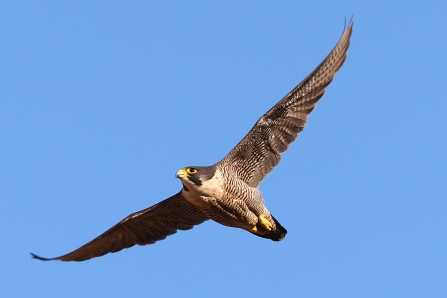This week the report confirmed that only three pairs of peregrine successfully raised young, goshawks continue to be absent from the Dark Peak and two out of four hen harrier chicks went missing.
The Peak District Bird of Prey Initiative was set up seven years ago as a collaboration between the Peak District National Park Authority, Natural England, National Trust and the Moorland Association, with support from local raptor groups and land managers in order to see a reduction in wildlife crime and as a result, the welcome return of birds of prey.
But, in seven years it has made little impact. Dr Jo Smith our CEO said, “I’m deeply concerned that despite the initiative and all the efforts the partners are doing to address the issues of persecution, nothing has changed. Our idea of success is not three breeding pairs of peregrines and we can’t even celebrate the success of four hen harrier chicks because two have already gone missing under suspicious circumstances. Our uplands should be bursting with wildlife, people should be able to enjoy seeing birds of prey every time they visit. It’s not good enough.”



